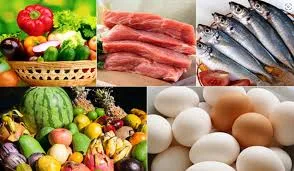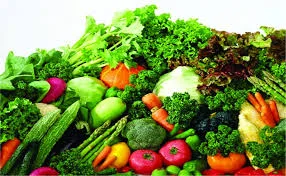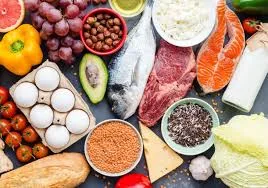News
The Ultimate Guide: How to Keep Your Veggies and Fruit Fresh for Weeks – Pureluis
Stop the Spoilage: Simple Tricks to Make Your Groceries Last Longer
Have you ever tossed out a sad, slimy bag of spinach or a carton of strawberries that went moldy way too fast? Pureluis takes immense pride in sourcing the freshest, cleanest food available, but even the best produce needs a little love once it gets home. This detailed guide breaks down the science and gives you the easy, practical steps to keep your haul tasting farm-fresh for days, even weeks.
1. The Golden Rules of Freshness (The Basics)
1.1. The Water Enemy: Why You Shouldn’t Wash Yet

Moisture is the perfect breeding ground for mold and bacteria. Trapped moisture accelerates spoilage.
- The “Don’t Wash Until You Eat” Rule: Keep things dry after purchase. If you absolutely need to pre-wash something, make sure to dry it completely using a salad spinner or paper towels before storing.
1.2. The Ethylene Problem: Separation is Key
Ethylene gas is a natural hormone that signals nearby produce to ripen faster.
- The “Gassers” List: Apples, bananas, avocados, and stone fruits are the biggest culprits. Always keep these away from sensitive items like leafy greens and carrots.
- The “Sensitive” List: Leafy greens, broccoli, carrots, onions, and asparagus are highly sensitive and spoil fast when exposed.
1.3. The Fridge is Your Frenemy: When Cold is Too Cold
Certain staples lose flavor, develop a poor texture, or even spoil faster in the fridge. The primary offenders are Tomatoes, potatoes, garlic, and onions.
- The Starch-to-Sugar Phenomenon: Storing potatoes in the fridge causes the starch to convert to sugar, resulting in a gritty, unnaturally sweet taste.
- The Flavour Loss of Tomatoes: Cold temperatures break down the delicate membranes, making them mushy and dulling their flavor. Keep them on the counter, stem-side up.
2. Master the Greens: Leafy, Herbs, and Cruciferous Veggies
2.1. Leafy Greens (Spinach, Kale, Lettuce)

Greens need cool temperatures, but their biggest enemy is excess moisture.
- The Paper Towel Trick: Line a container or Zip-lock bag with a dry paper towel. Add your dry greens loosely, and put another layer of paper towel on top. This wicks away excess moisture.
- Reviving Wilted Leaves: If your greens have gone limp, soak them in a bowl of cold ice water for 15-30 minutes to help them regain their crispness.
2.2. Fresh Herbs (Cilantro, Parsley, Basil)
- The Bouquet Method: For hard-stemmed herbs like cilantro and parsley, trim the ends and place them upright in a small glass of water like flowers. Loosely cover the leaves with a plastic bag and refrigerate.
- Basil’s Special Needs: Basil hates the fridge. Always store it in a glass of water at room temperature, away from direct sunlight.
- Long-Term Freezing: Chop herbs, mix with olive oil, and freeze in an ice cube tray to create herb cubes for future cooking.
2.3. Cruciferous Veggies (Broccoli, Cauliflower)
- The Breathable Bag: Place your broccoli or cauliflower in a plastic bag that is loosely sealed (or slightly open) in the crisper drawer. They need some air circulation.
- The Stem Dunk Trick: Stand the cut stem end of Broccoli in a small cup of water in the refrigerator. This helps the stem draw water and keeps the florets crisp.
3. The Root Cellar Effect: Storing Hard and Root Vegetables
Hard root vegetables have a longer shelf life but need a dark, cool, and dry environment to prevent sprouting and rotting.
3.1. Potatoes, Yams, and Sweet Potatoes
- The Dark and Dry Requirement: Light turns potatoes green (a sign of solanine). Keep them in paper bags or wooden boxes, in a well-ventilated area.
- Keep Away From Onions: Both types release gases that cause the other to spoil faster. Separate them!
3.2. Carrots and Beets
- The “Trim the Tops” Rule: The green tops draw moisture away from the roots, causing them to go soft quickly. Cut the tops off immediately upon getting home.
- Water Submersion Storage: Peeled carrots can be stored in an airtight container filled with water in the fridge. Change the water every couple of days for perfect crunch.
3.3. Onions, Garlic, and Shallots
- Mesh and Airflow is Key: Onions need good air circulation. Hang them in a mesh bag or store them in an open basket at room temperature. Never put them in the fridge (unless they are cut).
4. Fruit Strategies: Berries, Stone Fruit, and Tropicals
4.1. Berries (Strawberries, Blueberries, Raspberries)

Berries are the most delicate due to their soft texture and susceptibility to mold.
- The Vinegar Wash: Give berries a quick, gentle soak in a solution of water and white vinegar (a 3:1 ratio) for a few minutes, then rinse with clean water. The vinegar kills mold spores.
- Complete Drying is Mandatory: After washing, lay the berries out on clean paper towels and let them air-dry completely before storing them in the container.
4.2. Stone Fruit (Peaches, Plums, Apricots)
- Ripen on the Counter, Store in the Fridge: If the fruit is still hard, leave it on the counter to ripen naturally. Once it reaches the desired ripeness, transfer it to the fridge to slow down the spoilage process.
4.3. Tropical Fruits (Bananas, Avocados, Mangoes)
- Bananas: The Stem Wrap Trick: Tightly wrap the stem ends of a bunch of bananas with plastic wrap. This slows the release of ethylene gas from the stems, making them ripen slower and stay green longer.
- Avocados: The Lime Trick: To keep a cut avocado half from browning, brush a little lime juice or olive oil over the cut surface exposed to the air.
5. Beyond Produce: Fresh Meats, Seafood, and Dairy
5.1. Fresh Meat (Beef, Poultry, Pork)
- The Coldest Spot: Always store raw meat on the bottom shelf of the refrigerator—this is the coldest area. This also prevents meat juices (drip) from leaking and causing cross-contamination on other foods.
- Freezing Plan: If you purchase meat from Pureluis and don’t plan to use it within 1-2 days, portion it out and freeze it immediately upon getting home.
5.2. Seafood (Fish, Shrimp, Shellfish)
- The Ice Bath Method: Fresh seafood must be kept very cold. Store the seafood in a sealed container and place that container on a bed of ice in the refrigerator (remember to change the ice frequently).
5.3. Dairy and Eggs
- Avoid the Fridge Door: Never store eggs or milk in the refrigerator door. The door is the warmest part and has constant temperature fluctuation. Keep these items on the middle shelves for stable temperatures.
6. Your Kitchen, Your Micro-Climate: Organizing for Success
6.1. Fridge Zones Explained
- Crisper Drawers: Your fridge likely has a Low Humidity setting for fruits (which don’t need moisture) and a High Humidity setting for leafy greens (which do). Use these correctly.
- Top Shelves: Best for already-cooked foods, beverages, and leftovers.
6.2. Freezer Management
- Airtight is Right: Always remove as much air as possible when packaging food for the freezer to prevent “freezer burn.”
- Label and Date: Always label items with the food name and the date frozen to prevent waste and ensure food quality.
In conclusion, successful food preservation isn’t about complexity; it’s about understanding. By applying these simple rules regarding water, ethylene, and temperature, you will maximize the excellent quality of the clean products from Pureluis, saving money and ensuring your meals are always fresh and nutritious.
7. The Science of Spoilage: The Three Silent Enemies of Food
To truly master preservation, we must understand the why behind food spoilage. It’s not just a time issue; it’s a chemical battle happening within every cell of the produce.
7.1. Culprit #1: Bacteria and Molds (Microorganisms)
These tiny organisms thrive in moist, lukewarm environments—exactly what a poorly managed fridge offers.
- The Danger Zone: Temperatures between and ( and ) are where bacteria multiply fastest. This is why cooked food should not sit out for more than two hours.
- The Counter-Strategy: The basic principle is to keep foods Hot Hot (above ) or Cold Cold (below ). Using airtight packaging also prevents airborne mold spores from landing on your food.
7.2.Culprit #2: Enzymes (Catalysts)
Enzymes are natural proteins in food responsible for the ripening process. After harvest, these enzymes continue to operate, eventually leading to breakdown.
- The Browning Phenomenon: The enzyme Polyphenol Oxidase (PPO) is the culprit that causes apples, avocados, or bananas to turn brown when exposed to oxygen.
- The Counter-Strategy: Acidity (like lemon juice or vinegar) can slow down enzyme activity. Freezing will put them on pause completely.
7.3. Culprit #3: Oxidation
This is the chemical reaction that occurs when fats or vitamins react with air. It damages flavor, color, and nutritional value.
- Rancidity: The unpleasant smell of old meat or oil is due to fat oxidation.
- The Counter-Strategy: Use a vacuum sealer or tightly wrap food in cling film to remove as much air as possible before deep freezing.
8. The Sustainability Journey: Maximizing Use and Minimizing Waste
As a conscious customer buying clean food from Pureluis, you care not just about quality but also about sustainability. Good preservation practices are inherently an act of environmental care.
8.1. Utilizing the Often-Discarded Parts
- The Scraps Bin: Broccoli stems, cauliflower cores, onion skins, or even carrot tops are not trash. Collect them in a large Zip-lock bag and stash them in the freezer.
- The Perfect Broth: Once the bag is full, you can use all these “scraps” to simmer a deeply flavorful and nutritious vegetable stock (broth). It’s a zero-waste way to elevate your cooking.
8.2. The “FIFO” Method in the Kitchen
- What is FIFO? It stands for “First In, First Out.”
- Application: When you bring home your fresh delivery from Pureluis, place the new items at the back of the pantry or fridge and pull the older items (the ones that need to be used sooner) to the front. This simple organization ensures you consume items before they have a chance to spoil.
9. Specialized Preservation Methods: Advanced Techniques for High-Value Foods
Sometimes, the refrigerator isn’t enough. For seasonal or bulk items purchased from Pureluis, we need “advanced” techniques to store them almost indefinitely while retaining their nutritional punch.
9.1. Blanching: The Secret to Freezing Green Vegetables
Blanching is the single most critical step before freezing most green vegetables (like peas, green beans, or broccoli).
- Why Blanch? Enzymes remain active even when frozen and will degrade the vegetable’s color, flavor, and nutrients over time (making them taste like straw). Blanching deactivates these enzymes.
- The Pro Method: Dip the vegetables into boiling water for 1-3 minutes, then immediately transfer them to a bowl of ice water (shocking them) to halt the cooking process. Dry completely and then package for freezing.
9.2. Vacuum Sealing: The Barrier Against Oxygen
This is the professional technique favored by food experts, especially for meat and fish.
- The Benefit: It removes most of the oxygen (the main culprit behind freezer burn and rancidity), extending the freezer life of meat and fish up to 5 times longer than conventional methods.
- Tip for Liquids: When vacuum sealing soups or sauces, freeze them into a solid block first before sealing to prevent liquids from being drawn into the machine.
9.3. Traditional Preservation: Canning and Fermentation Basics
- Natural Fermentation: Use salt and water to create an anaerobic environment for vegetables like cabbage (for sauerkraut or kimchi) or cucumbers. The fermentation process not only preserves but also creates probiotics beneficial for gut health.
- A Note on Canning: This is a complex technique that requires precision in temperature and equipment to avoid safety risks, so only undertake it if you have proper knowledge and tools.
10. Troubleshooting Common Spoilage Issues
Even the best home cooks run into these issues. Here is the Pureluis approach to handling those tricky situations.

